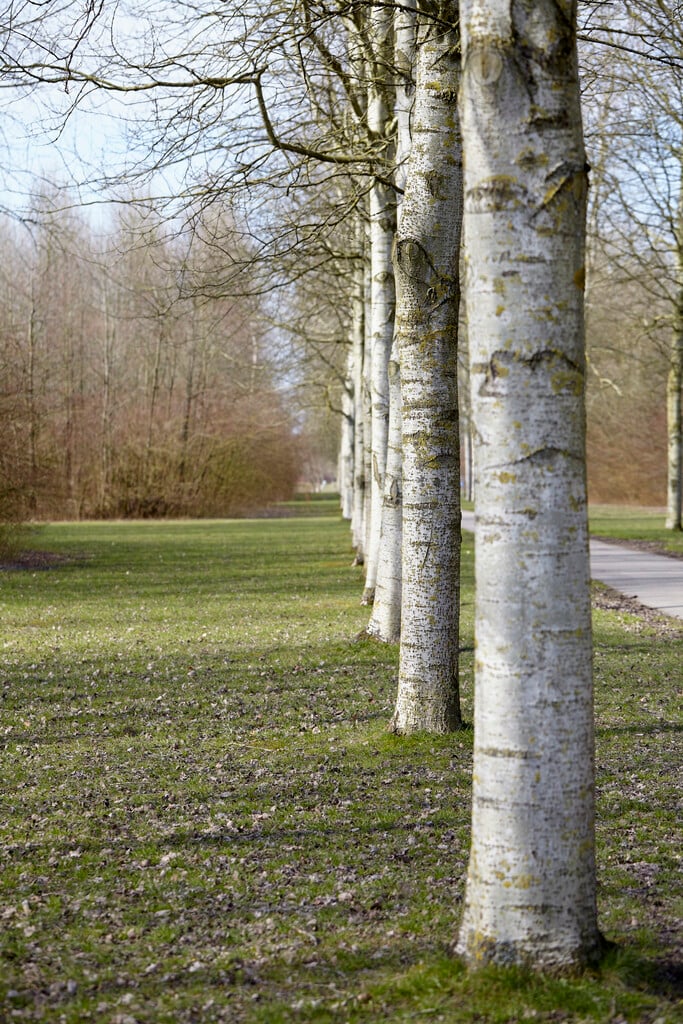Populus × canescens
grey poplar
A large fast growing deciduous tree to a height of more than 30m, spreading or upright in habit, with dark green glossy leaves that are grey underneath. In early spring, red catkins appear on male trees, and rarely seen, green catkins on females

Buy this plant
Size
Ultimate height
Higher than 12 metresTime to ultimate height
20–50 yearsUltimate spread
Wider than 8 metresGrowing conditions
Moisture
Moist but well–drained, Well–drainedpH
Acid, Alkaline, NeutralColour & scent
| Stem | Flower | Foliage | Fruit | |
| Spring | Red | Green Grey Silver | ||
|---|---|---|---|---|
| Summer | Green Grey Silver | |||
| Autumn | Green Grey Silver | |||
| Winter |
Position
- Full sun
Aspect
South–facing or West–facing
Exposure
Exposed or Sheltered Hardiness
H7Botanical details
- Family
- Salicaceae
- Native to GB / Ireland
- No
- Foliage
- Deciduous
- Habit
- Spreading branched
- Genus
Populus are deciduous trees, mostly very fast-growing and large, with male and female catkins on separate trees, opening before the leaves. Male catkins are the more ornamental, female ones can be a nuisance from the cottony, wind-blown seeds
- Name status
Correct
How to grow
Cultivation
Cultivated for their very rapid growth as specimen trees. Useful as windbreaks. Tolerant of any soil other than constantly waterlogged soils. Avoid growing within 40m of buildings as the vigorous root systems may damage drains and foundations, particularly on clay soils; has the potential to become a nuisance
Propagation
Propagate by hardwood cuttings in winter and suckers in autumn or late winter
Suggested planting locations and garden types
- Wildlife gardens
Pruning
Pruning group 1 in late summer to avoid infection from bacterial canker and bleeding from pruning cuts. Train as a central-leader standard. Never allow competing leaders to develop. Established trees need little pruning; sucker removal in autumn or winter
Pests
May be susceptible to leaf beetles, sawflies and caterpillars
Diseases
May be susceptible to leaf spots, poplar bacterial canker, tree rusts and honey fungus
Get involved
The Royal Horticultural Society is the UK’s leading gardening charity. We aim to enrich everyone’s life through plants, and make the UK a greener and more beautiful place.